- Apply
- Visit
- Request Info
- Give
Treasures from the Past
Library collections yield historical gems
Written by Lucinda Weiss
Published on May 02, 2023
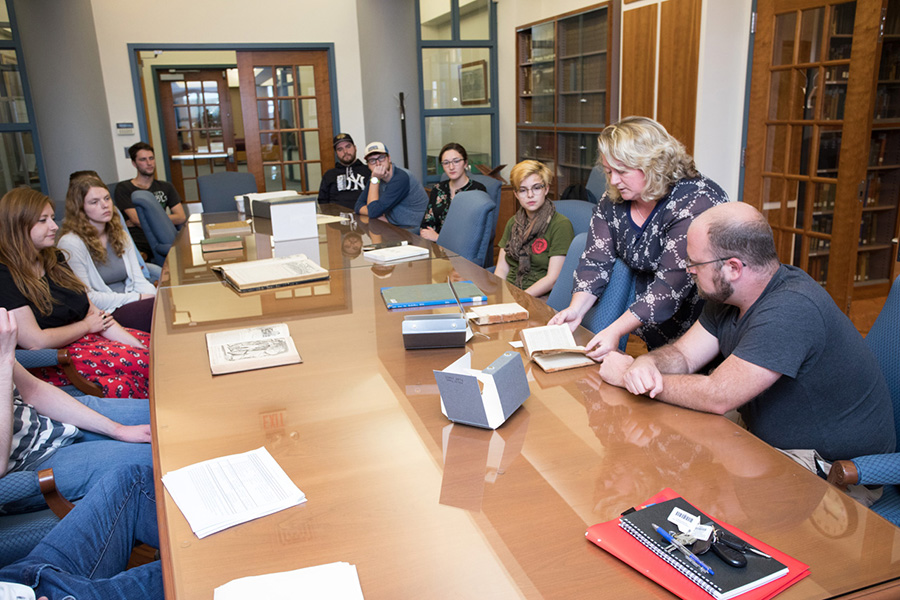
Hidden in plain view, on the fourth floor of the J. Eugene Smith Library, are collections that tell the stories of local people who lived in earlier times. There you can find first-person accounts of battles written by Civil War soldiers; dance cards from Windham socials in the 1920s; letters from death row inmates; and shelves of leather-bound books dating back to the 18th century.
It’s all there in the Archives, Special Collections and Center for Connecticut Studies, housed on the library’s fourth floor and accessible to the public by appointment. Students use the collections for class assignments about local history and antique books. The collections also have rich primary source material for writers, historians and sometimes people tracking missing pieces of their family history.
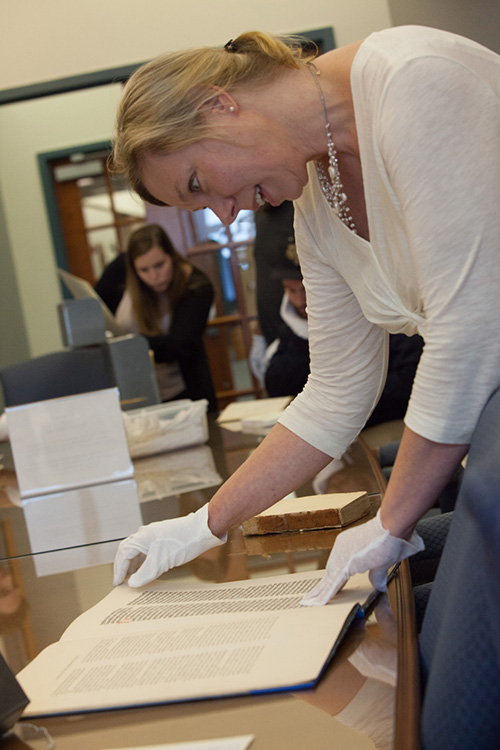
Recent records are stored there too — all The (Willimantic) Chronicle’s editions back to 1877, a selection of the town of Windham’s records, including tax records, town directories, and even dog and liquor licenses issued through the years. Eastern’s records are stored there as well, down to class syllabi and information on where every student teacher from 1889 through the 1920s worked after graduation.
“It’s a glittering jewel not enough people know about,” says Caitlin Carenen, professor of history, describing the Center for Connecticut Studies, which she directs. The center is recognized as a Center for Excellence by the Connecticut State Colleges and Universities.
Tara Hurt, university archivist, who manages the collections day-to-day, is working to digitize the holdings, a huge project aided by student interns. Some parts of it, like the Church Farm Collection — donated records dating back to 1840 of an Ashford farm and farm family — are available at https://www.easternct.edu/churchfarm. Other records can be searched in-person with the help of aids that tell the archivist where to locate the records. And some volumes, like city directories, are in the stacks.
One large volume, the Grand Army of the Republic’s handwritten accounts of births, deaths and battle experiences of the area’s Civil War soldiers, reveals in fading brown-ink cursive how local boys — some as young as 14 — signed up and went to war.
“Hanging up my scythe in an apple tree, leaving the hayfield with my father’s consent, (went) to enlist,” wrote Jerome B. Baldwin of Mansfield, born in 1843 and enlisting in 1862. He wrote that he “hitched up the family horse and (drove) to enlist with a neighbor and friend, Edwin Thorne,” who was later shot dead at Baldwin’s side in battle at Drury’s Bluff, VA.
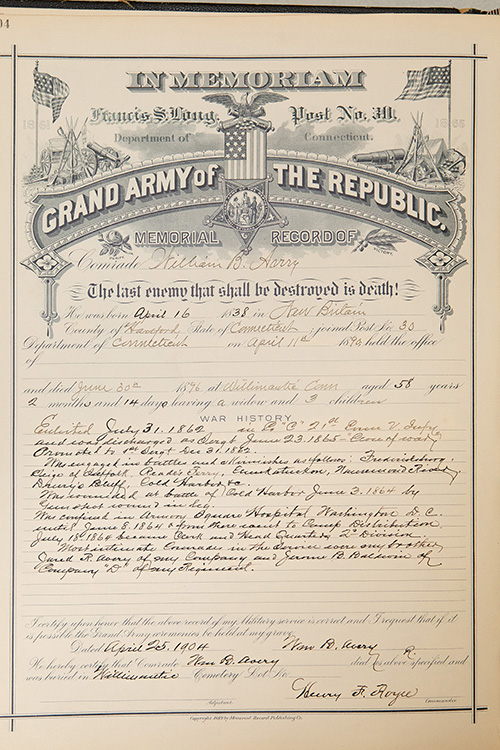
Baldwin remembered climbing a tall tree at Petersburg, VA, on June 16, 1864, and singing a jingle for his comrades below, “For we are going to Dixie to fight and (missed?) your eye.” He climbed down, they marched through a cornfield toward Petersburg with fixed bayonets, and as he advanced, he was struck by a Confederate Minié ball in his left eye, the first in his company to be hit. He remembered the Confederate gunfire splintering a fence he climbed over in his escape on the Petersburg Road.
Earl S. Cranston, born in 1843 in Mansfield, tried to enlist in Willimantic in April 1861, at the start of the war, but no one would captain the regiment. “They were not right politically, all smelling of copper,” he wrote, referring to “Copperheads” who opposed Lincoln’s war. So he went to Hartford to join a company being raised by Col. Samuel Colt, who was going to outfit it with his revolving rifles, but that, too, failed. Finally, in July he enlisted in the 5th Connecticut Volunteer Infantry and saw action at Chancellorsville and Gettysburg.
There is also the account of Leonard Shaffer, born in 1818 in Willington, who recalled lining up on the road at the Battle of Cedar Creek in the Shenandoah Valley “when Gen. Phil Sheridan rode up, his black horse white with foam. An officer in command said, ‘General, the day is lost!’ ‘Not by a long sight,’ said General Phil. ‘I can lick them now with what few men I can pick up.’ And we did.”
The family of Capt. Charles Fenton, who became a prominent silk mill manager and owner in Mansfield and Willimantic, donated not only his pocket diaries from the Civil War but also his boot spurs, holsters and other “realia,” as physical items are now called, stored in archival boxes in the Center for Connecticut Studies.
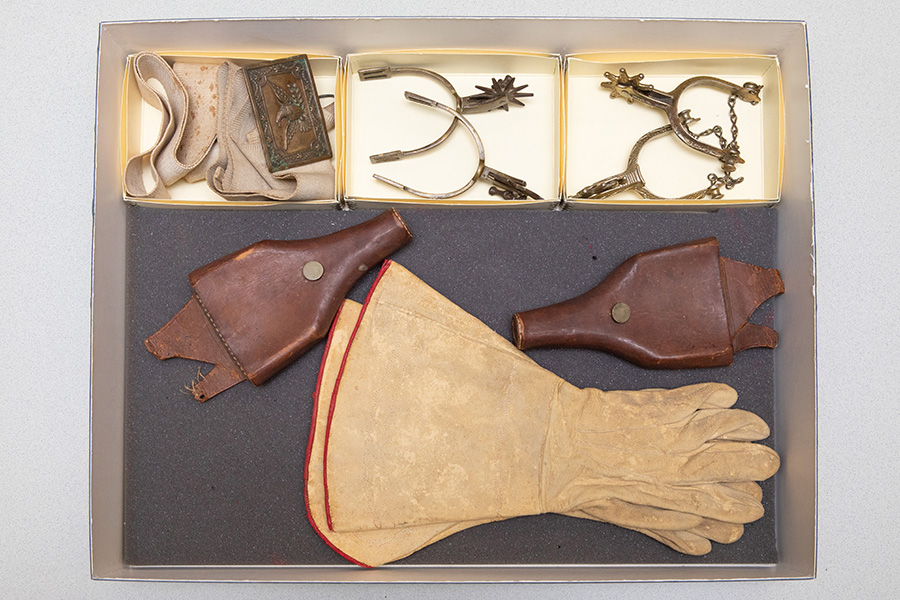
Other parts of the collection include 19th-century textbooks, which show how school curricula have changed over time; Sanborn fire maps, detailed maps of fire risks across the county, showing how the area has changed; and letters written by death row inmates from Connecticut.
“It’s a pretty extensive collection,” says Carenen. “What makes it special to me, is that there aren’t a lot of schools that have archives of this kind.”
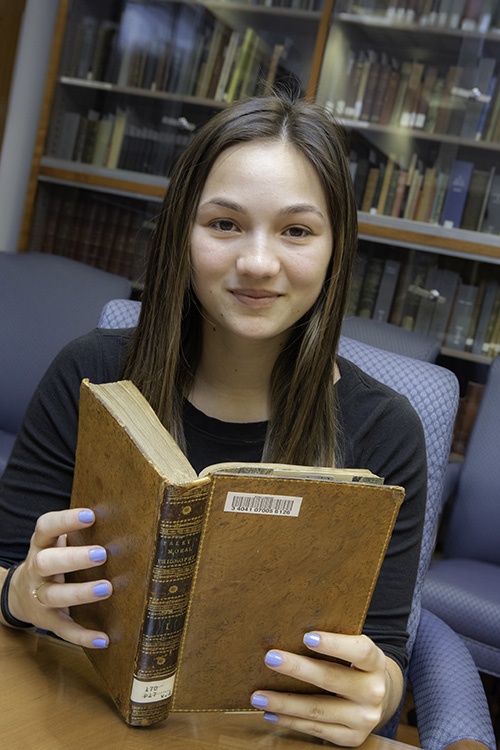
Students from many disciplines — not just history and English — make use of it, notes archivist Hurt. It’s a rare chance for students to work on original material from other eras. “We really try to get the students using the material because that primary source document experience is very unique,” she says.
Noelle Ciccarelli ’23, a senior developmental psychology major, took a course with English Professor Benjamin Pauley, The Social Life of Books, in which she had to study a book in the special collections.
She stumbled upon “The Confessions of Con Cregan,” a picaresque tale written in the 19th century by Irish novelist Charles Lever. “It was super interesting to try and piece together the mysteries of this book and the inscription inside,” says Ciccarelli. “I’ve never visited or used a book from Special Collections before but I’m glad I did.”
Jarod Werner ’23, another of Pauley’s students, researched Gilbert J. Hunt’s “The Late War,” published in 1816 just after the War of 1812 ended. “I’ve always loved old books and documents,” he says, “so being around so many in a comfortable space and being able to examine one in depth was really interesting.” The experience made him want to pursue a career in library sciences or historical archiving.
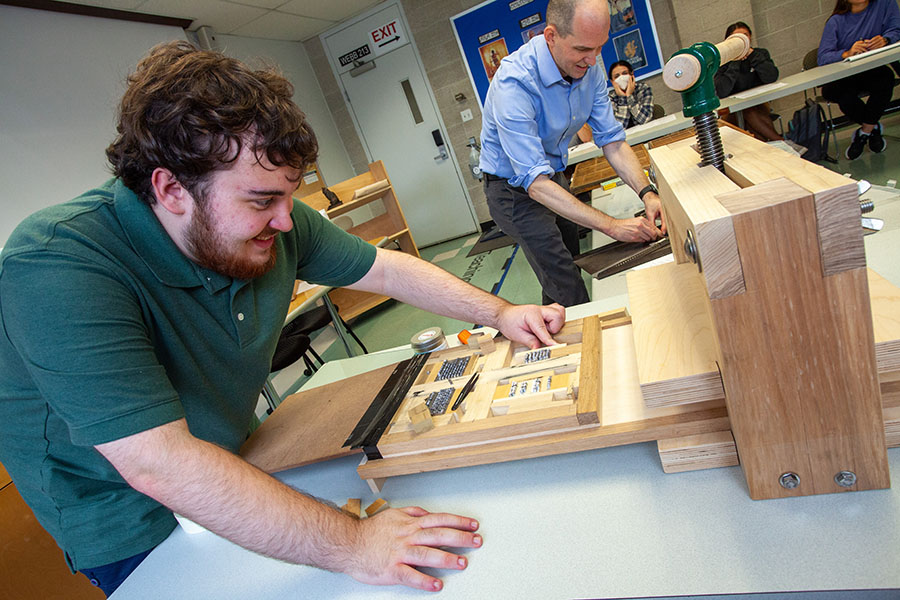
Like other students in the class, Werner made his own book using a small press that Pauley built. They set their own type and inked the pages to learn how books were made. “It was surprisingly difficult. However, once it was on the page, it was very satisfying to look at,” says Werner.
Pauley, whose research is on 18th-century England, says that for some students, “it was the first time they were touching a book that old,” when paper was made by hand and printing was also a hands-on skill. “Special Collections was our way into thinking about books as material objects,” he explains.
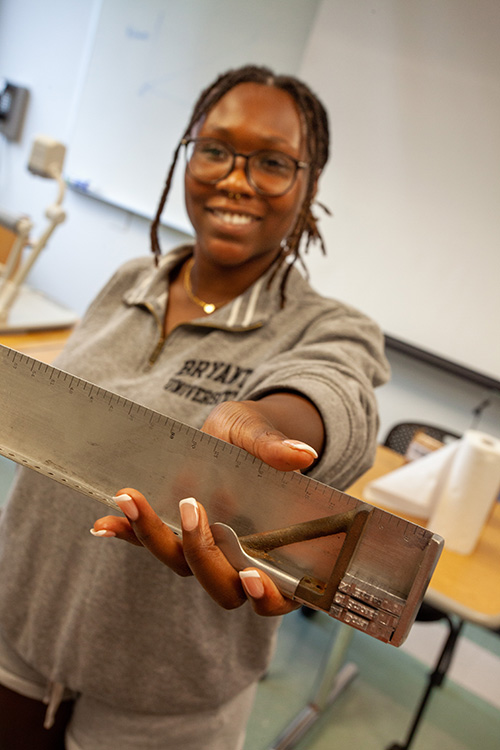
Census records from 1900, local maps and town directories were consulted by student Angela Papadopoulous ’22 in researching the history of a house at 67 Lewiston Ave., Willimantic, for a class taught by Stefan Kamola, associate professor of history. In the archives she also found tax registries and books about Willimantic industry that helped her trace the families who lived in the house over the years.
Bill Powers, a weekly columnist for The (Willimantic) Chronicle who visits three or four times a week to research his articles on local history calls the Eastern archives “a veritable oasis in the desert of information at times.”
Powers, formerly a teacher at Windham High School and now retired, digs through the archives for photographs, old stories, even newspaper advertisements that he calls a “slice of life” documenting Willimantic 100 years ago — “what it was like for the everyday person.”
“You get the stories of who’s coming to visit, who’s new to the community,” he says. Powers wrote several columns about Windham High School’s 1942 state championship basketball team, drawing material from the sports sections of old issues of The Chronicle.
The archives also house a wealth of information about the Revolutionary War era, the silk industry, and what happened in Willimantic during the 1919–20 stock market crash. He also has found stories of Prohibition — how two Russian farmers were charged with making moonshine in 1921 — and who served in World War II.
“I love it — I taught history,” he says.


